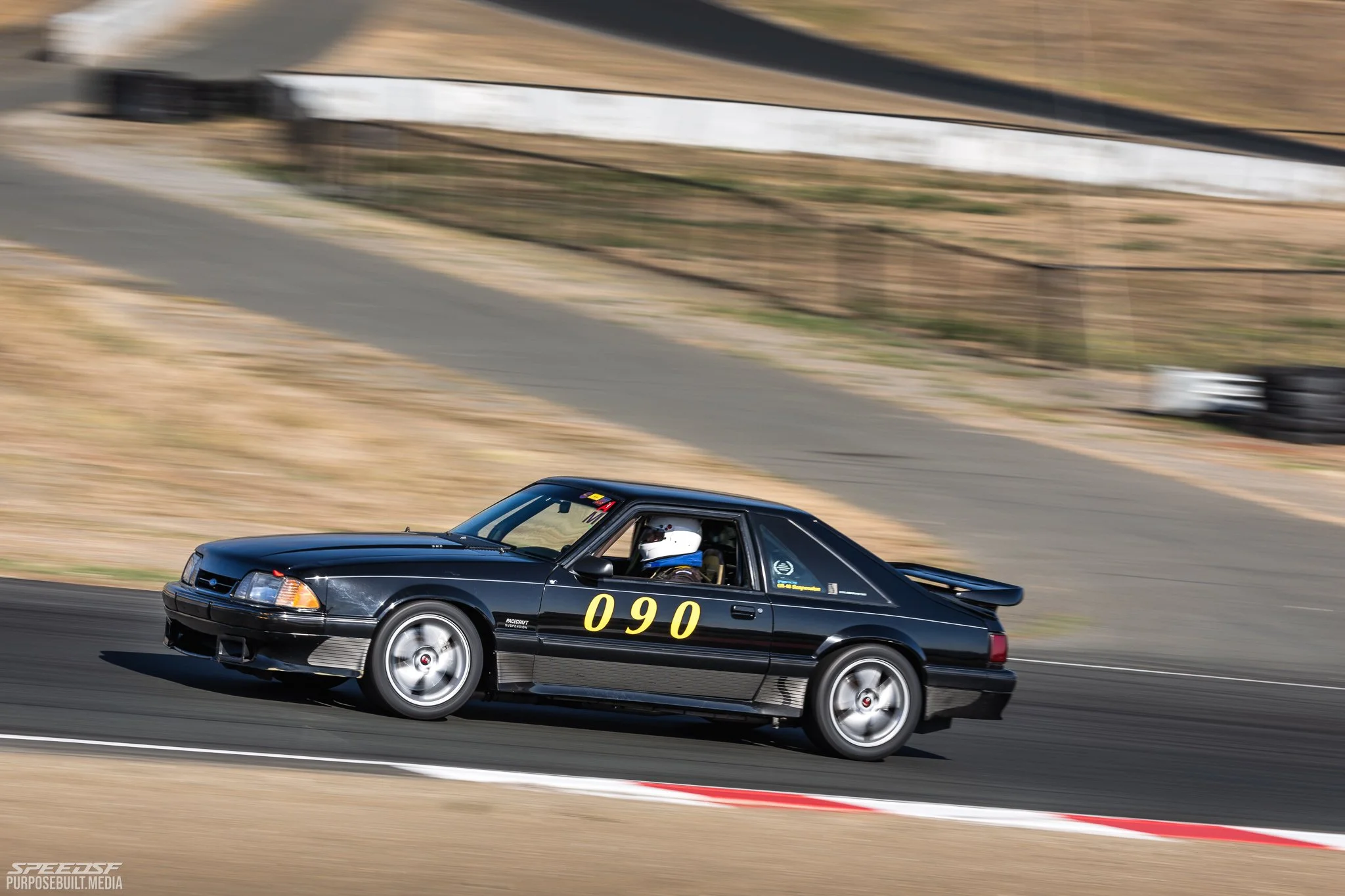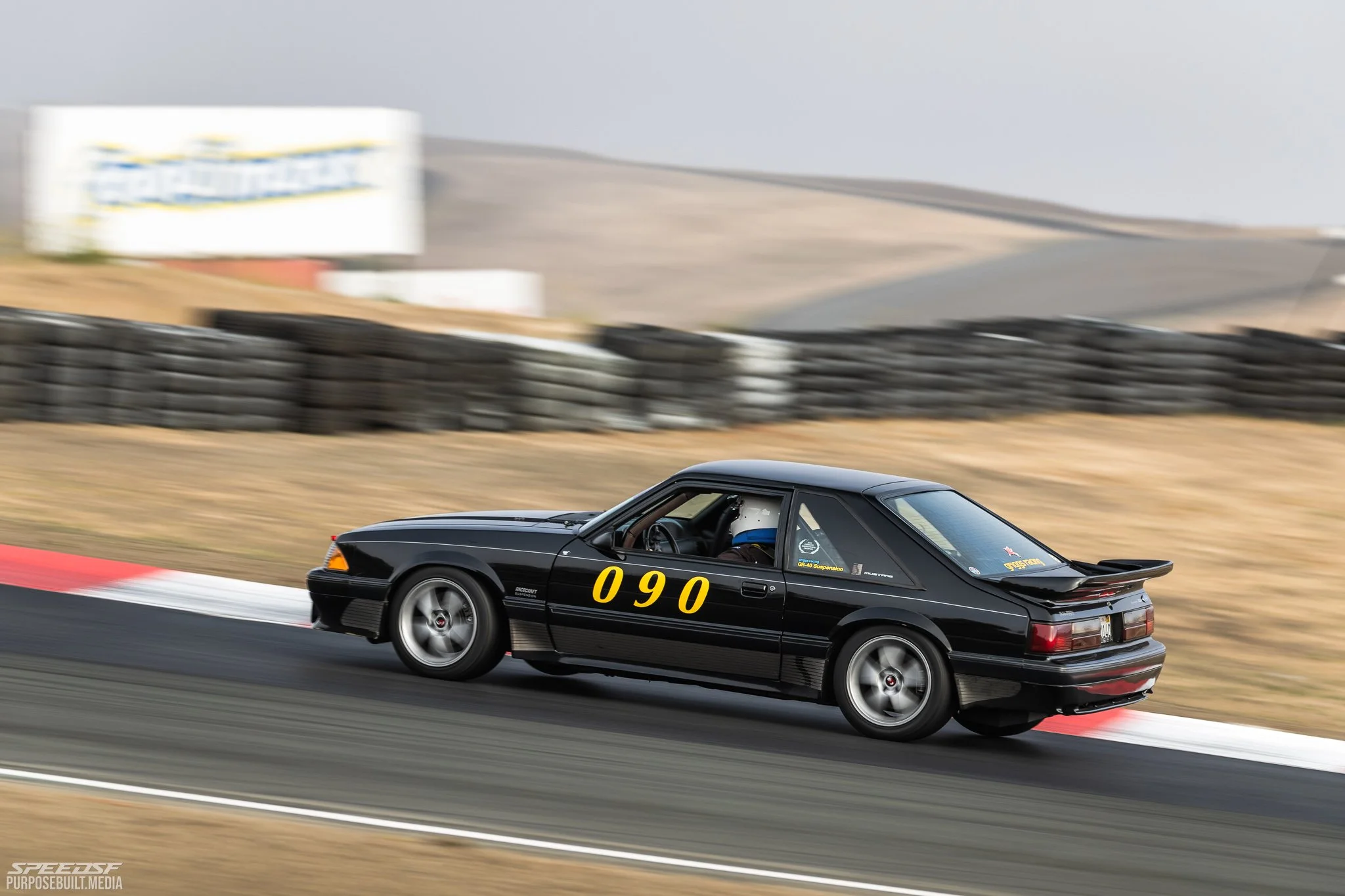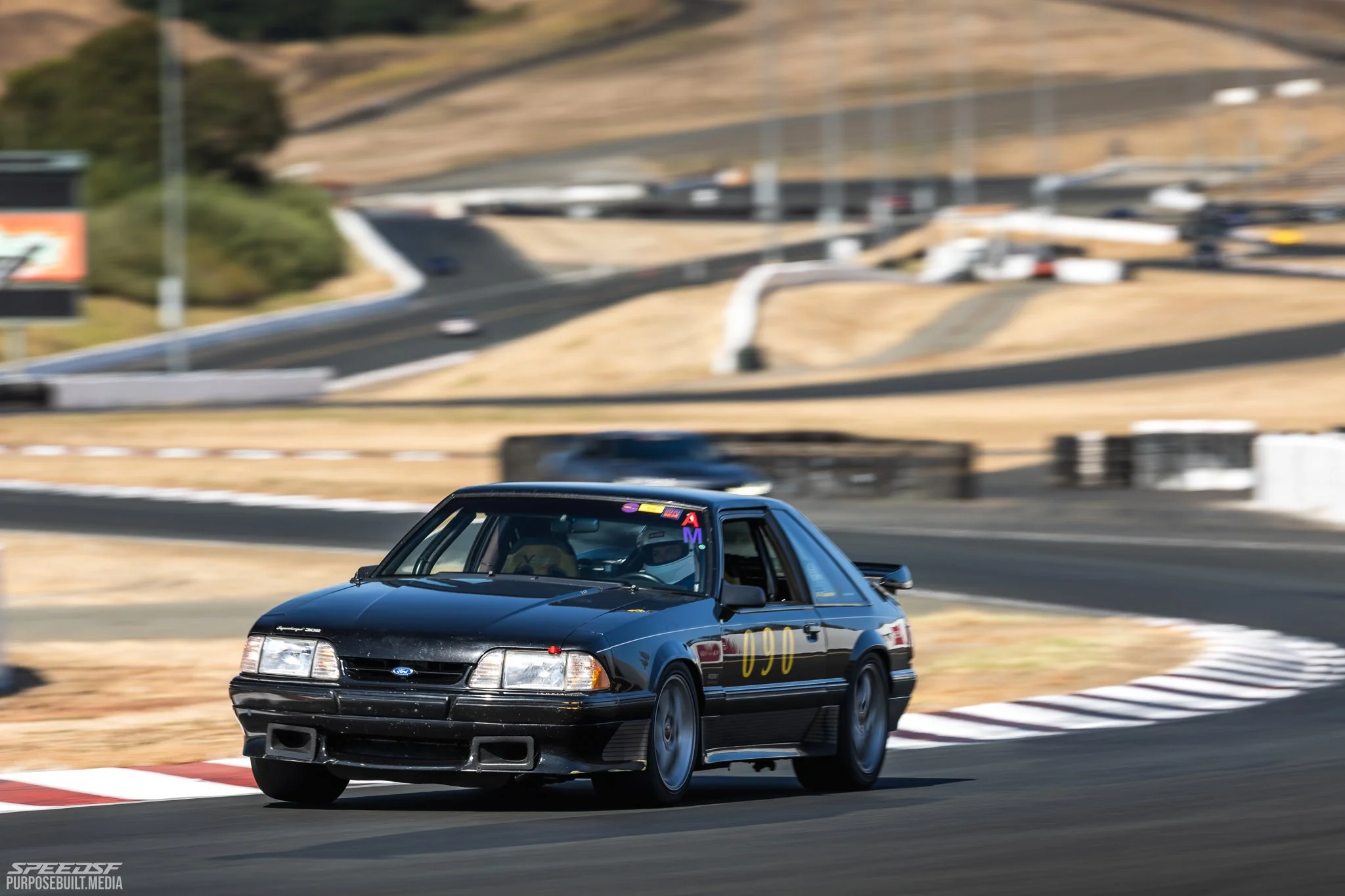Bryan’s Foxbody: An Heirloom Worth Risking
As a boy, Bryan Rankin’s spent many weekends sitting on the garage floor and studying his dad working on the family cars. By the time he was a teenager, Bryan had picked up wrenching and began tinkering on his bikes. It was only a way to pass the time then — a little bit of teenage hijinks aside, he was only a casual hobbyist. However, just as he was starting his career as a commercial pilot, a friend introduced him to track days.
“I always had an interest in cars – Mustangs, really – but it was a little cost-prohibitive when I was younger. I ran bikes on track days from 2005 until 2012, when my frontal lobe finally developed and I had to accept it was too dangerous.”
While Bryan was enjoying his track day foray, Bryan’s future father-in-law was developing a rare Saleen Mustang as a track toy. Though street-legal, it was rapidly transforming into a track-only special with most of the Griggs parts catalog thrown at it.
“From 2002 to 2003, my father-in-law and his friend pulled the 302 and bored out to 347ci. On 10:1 compression and 10 pounds of boost from a newer Vortech blower, the motor dynoed at 630 wheel horsepower. Now, nothing is factory Ford except the short block.
Those were only the first of many modifications. The duo picked up Griggs Racing’s GR40 kit: a hardcore handling package for trackday Foxbody drivers demanding the best available. Consisting of Griggs own arms, links, Koni shocks, and a panhard bar, GR40 provides more anti-dive, a larger contact patch, and full camber adjustment.
At the rear end, they fitted a Ford 8.8” with a locking differential, and Cobra-style spindles to support 5-lug wheels and bigger Cobra calipers and rotors. At the front, they installed SN95 four-piston Cobra calipers, slotted 13” Brembo rotors, and Hawk HP+ pads. The kit added 3” scat tubing that begins in the airdam and blows on the backside of the disc. The package allowed them to run a set of 275/40R-17s at all four corners.
With these modifications in place, it became clear that keeping it streetable was no longer worthwhile – why make a contrived decision to save what’s not worth keeping? The way forward was clear: strip the interior, add a cage and fire suppression system, then weld steel plates along the car’s undersite to increase rigidity. After all the chassis work was done, the Mustang weighed in at 3,050-pound with perfect 50:50 weight distribution. It was about as optimized as a hobbyist could expect a Foxbody to be on a hobbyist’s budget.
They went on to take it to big events like the public highway land speed events like the Virginia City Hillclimb to make full use of that amazing powerplant. “One time at the Silver State Classic, her parents even had their family dog in the back of the car riding to the starting line. They had someone hold the dog while they ran the time trap!” Bryan added.
As it often happens, the challenge of building the car is exhausting enough, and once it had been brought to full-track spec, Bryan’s father-in-law couldn’t drive it as often – life simply got in the way. So it sat untouched for several years until he decided to give it to his daughter and her new husband.
“He asked, ‘Do you two want it?’
‘Sure, twist my arm,’ I said.
Now established in his career, Bryan had the means to use his new acquisition without worry, but learning how to use a platform with four points contacting the pavement took some adjustment.
“On track, the mentality is similar whether you’re on two or four wheels. The lines aren’t that different, really. I’d say the biggest challenge was learning how to manage the weight. On the bike, you’re used to a narrower window between gripping and an accident. There are other things young can’t do, either – braking in a corner generally leads to low-siding. Learning all the little differences took some recalibration.
It wasn’t hard to push the car once I started trying since the car was stable and progressive. I could see how much more I could push it pretty quickly without making any major mistakes. Compared to a stock S197 I got to track, this feels much less likely to swap ends on you.
There were more things I learned as I started trusting the car. For example, coming out of the Carousel, I was surprised by how it picks up grip under compression.”
With all those ideas in place, he could get to grips with the Hoosier RCES he’s been using. “On those, the car hooks up pretty good. On cold mornings and out of tight corners, it’ll spin ‘em, but it’s friendly enough. I appreciate that since I’m still pretty new to all this, so I tend to be more conservative. I just drive to my comfort level. There’s definitely a lot of performance I haven’t accessed yet,” he explained.
Perhaps that’s for the best at the moment, as the motor will get toasty towards the end of a twenty-minute session.
Despite these hangups and his careful approach, Bryan’s already managed to lap Sonoma Raceway in the 1:54 range. Given his experience, that’s nothing to sniff at.
It’s worth bearing in mind that the car has no nannies at all, and its old-fashioned ECU is less than flexible – an indication of just how archaic tuning of the early 2000s might seem by modern standards.
“It doesn’t like to be driven gently. If you’re not quick-shifting and you take too long to match revs, it’ll go into a closed loop cycle that throws the timing and makes the car run rich, which forces you to return to the pit lane and restart it. After about twenty seconds, it’ll run right again.
Generally speaking, it’s just not that forgiving. You gotta get it up to 2,000 revs before you can let the clutch out, for example. There’s no idle control, either. It’s temperamental, but it’s happy once you start hammering on it. It would not be a good daily,” he explained.
For what it lacks in practicality, it makes up for in reliability. “It’s been reasonably cheap. Besides a Fuelsafe cell, it’s only needed basic stuff a thirty-five-year-old car needs. Most of those things – sumps and stuff – are all available through Summit. The spindles, wheel bearings, and other Ford Performance parts available through Motorcraft. It’s all pretty reasonable,” he noted.
As Bryan acknowledges he’s got to find a lot of the performance currently available, he doesn’t have major plans for modification in the near future. There is one item he plans on, though more to understand how the car is operating than eking out any additional performance. “It was tuned before the remote OBD2 plug-ins were available, so I’m looking for a new ECU so I can EFI-live it with a bunch of different fuel maps,” he explained.
“The car has a very special place in the family; my wife drives it too. Her dad is still involved and has been working with me to get the motor back. Hopefully, we’ll get one last day in before the rain starts,” Brian concluded.
Bryan’s recognized the need to keep the heirloom in the family and let the pater familias have his bi-annual outing with it. Otherwise, he might get jealous of all the fun his son-in-law’s been having.








